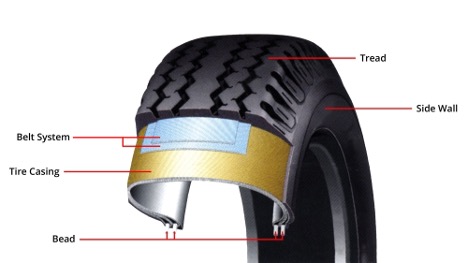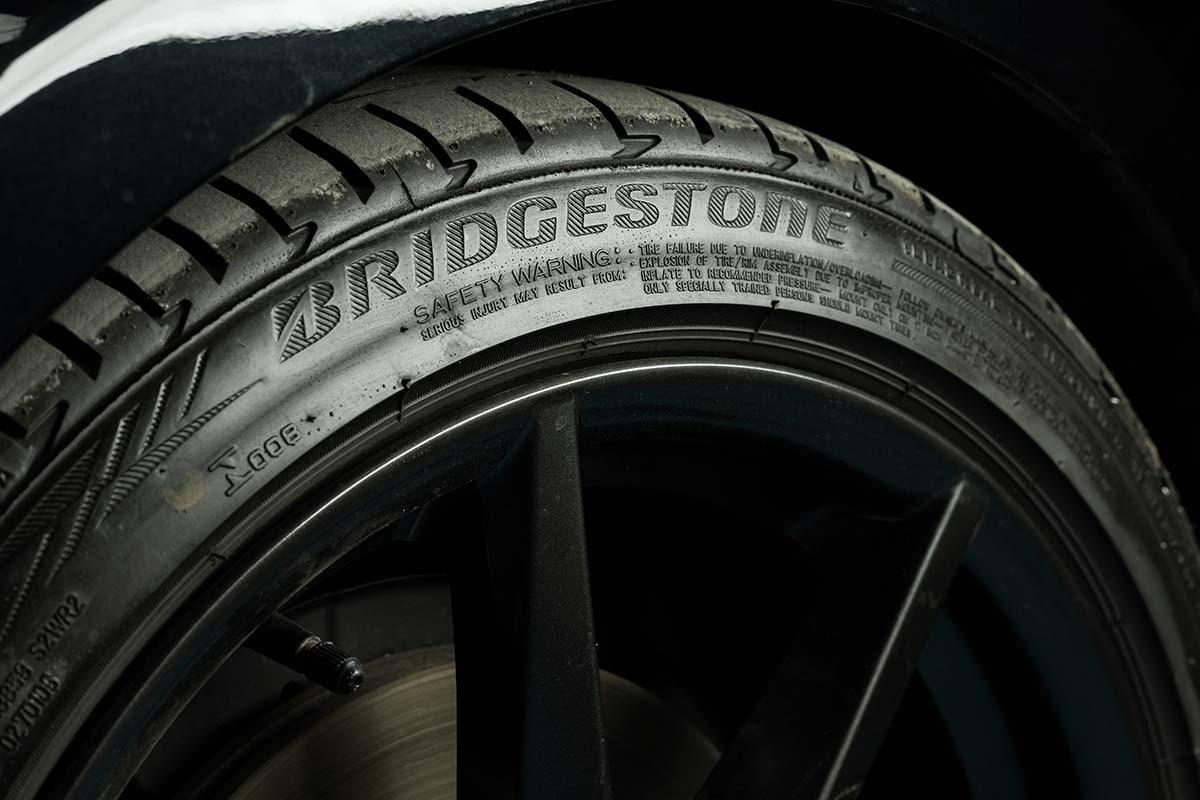2021-07-01 | Bridgestone Team
WHEN DO YOU HAVE TO REPLACE CAR TIRES?
The tires are the important part that supports the entire weight of the vehicle and greatly affects the safety of driving. Therefore, it is requested to regularly check to know when to replace or patch the tires. The following article suggests in detail when to replace the car tires and some maintenance ways to prolong their lifespan.
1. What are good tire conditions?
The tires in good conditions are ones with high traction ability and have not been replaced or patched before, the vehicle is smoothly driven and does not lose efficiency when braking. If you have your vehicle checked periodically and the tires are not worn, distorted, cracked, or inflated or your vehicle often moves on smooth and not-bumpy roads, the owner can rest assured that it is not the time to replace the tires.
2. When to replace your vehicle’s tires?
There are many signs and ways to identify when to replace the tires. The article gives 3 specific ways for the vehicle owners or drivers to identify themselves before taking the vehicle to the garage for replacing or patching.
Visual indicators:
If the vehicle shows signs such as the damaged tire valve cap, the uneven, very-few and not-sharp tire tread, the tread is only about 1.6mm - 3mm left, it means that the tires are worn and need to be replaced. Some tires have small ridges located between the grooves, when these ridges are exposed, it is time to replace the tire.
The tire sidewall is always under great pressure of the entire weight of the vehicle, being pressed down on the road surface and the air is pushed to the sides of the wheel. If it is punctured or has a strong impact, cuts or scratches appear due to long-term friction with the road surface, it is time to properly replace or patch the tires to prevent the punctures from deeper cuts.
In case the tires are inflated, peeled, or deformed, it means that the tires have changed its internal structure or the tires have any holes with a diameter of about 6mm and the bead is damaged and deformed, the vehicle owners need to replace the tires as soon as possible to avoid tires explosion while driving.

Car tire structures
Based on time and climate:
The tires’ lifespan is usually 5 years, after that, the vehicle owners should replace the tires and check them once a year. In case the vehicle is nearly 10 years old, although it is still in good condition and the tires have not shown any signs of damage or the tread has not worn to the indicator line, you should have a vehicle check because the tires may have some aging or structure problems which are difficult to recognize with eyes.
The vehicles often move in harsh climates: heating, humid, road and air usually on high temperature, or snow and ice. The tires are often exposed to oil, grease, and chemicals that can easily damage rubber then they should be replaced or patched.
The drivers’ awareness
When you are driving and you find out unusual noise or vibration of the steering wheel or the vehicle is not running smoothly, it is a sign of damage or punctured tires. You need to go to the nearest garage for patching or replacing.
Using the measuring instruments:
Another way is to use a specialized tool that could measure tread depth. If the depth is less than 3mm, it is time to replace a new tire.

Signs of worn tire
3. Maintenance ways for prolonging the lifespan of tires:
Check the tire manufacturing date printed on the tire surface and know how to read the parameters depending on each vehicle model. For inspection and maintenance, it is best to see a specialist or technician who knows how to replace and patch the tires to check your vehicle regularly.
Do not drive too fast or brake hard. Avoid driving on damaged roads, potholes. Do not exceed the allowable load, especially for trucks of all kinds as the high pressure on the wheel will increase the friction force, causing the tire to wear quickly and be dangerous when driving. Do not inflate and use the vehicle when the tires are too underinflated or the wheel is flat causing unbalance when in contact with the road surface, the tire will also wear unevenly.
Use the seasonal tires such as summer tires that are not intended for use on slippery, icy roads. Choose the tires that are suitable for the road surface such as emphasizing good road holding when traveling on highways, slopes, rough roads. Do not use different types of tires in the same time.
Replace with the spare tire as soon as you feel any differences while driving, then have a check at the tire dealer. Find a reputable garage and experts who understand the right tire problems for maintenance. Choose the tires from well-known brands, do not choose the cheap or poor-quality tires because you might have to replace or patch the tires many times and it is unsafe when traveling.
-
Tire Alignment: What You Need to Know
Tire Alignment: What You Need to Know
Proper alignment can help your tires perform properly and last longer. But what happens when your alignment goes out of whack?
Learn More -
Should we install a tire pressure monitoring system for our car
Should we install a tire pressure monitoring system for our car
Hệ thống giám sát áp suất lốp (TPMS) giúp theo dõi áp suất lốp theo thời gian thực, cảnh báo kịp thời khi lốp non hơi. Cùng Bridgestone Việt Nam tìm hiểu có nên lắp đặt TPMS hay không.
Learn more -
Drive into Summer Prepared
Drive into Summer Prepared
There's more to driving in the summertime than just cranking up the A/C. Heat can be your car's worst enemy, so make sure your ride is ready for the road, no matter what the summer brings.
Learn More